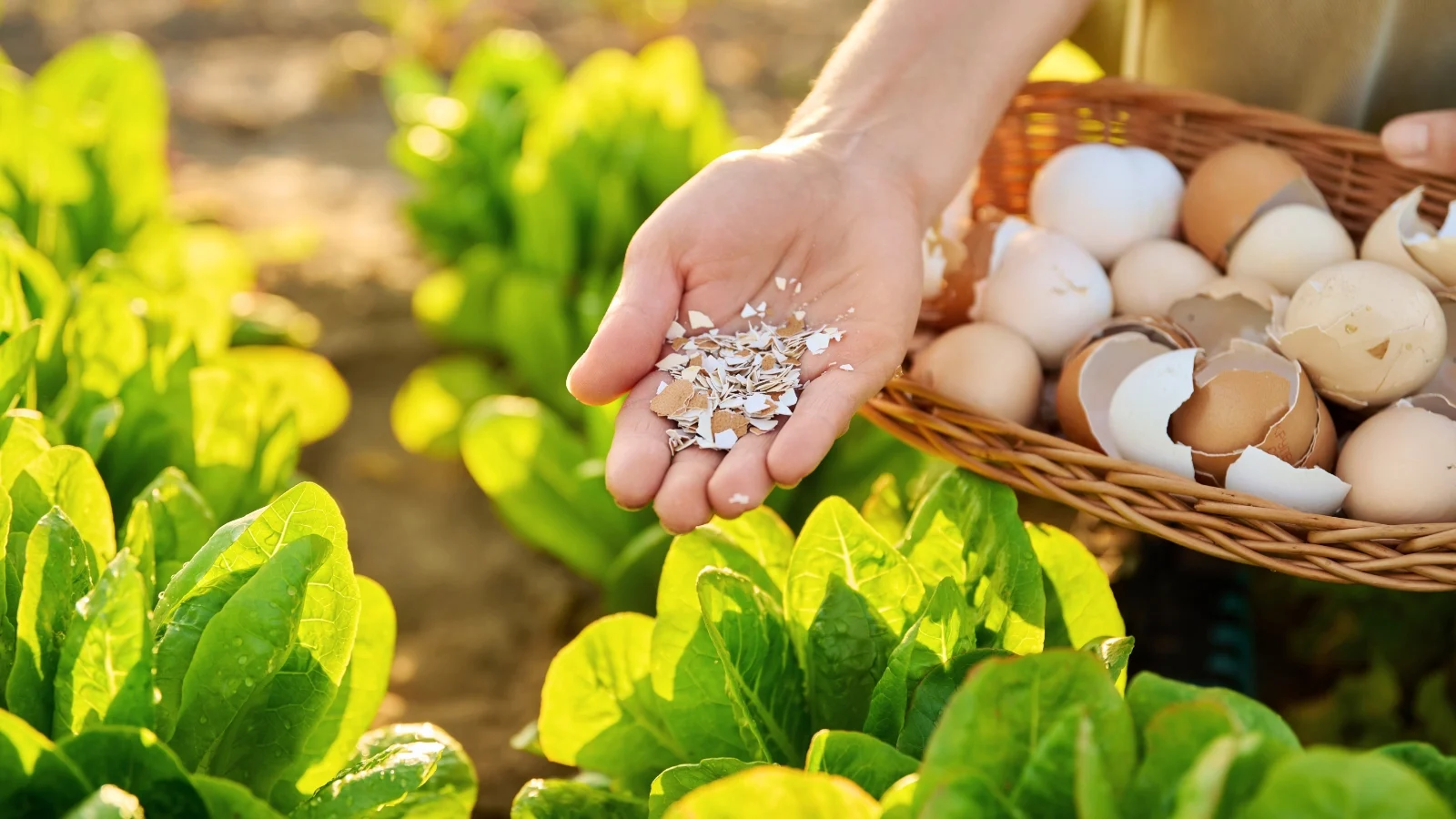Eggshells have some great uses in the garden, but there may be some misconceptions out there about how and when they are useful. Join gardening expert Melissa Strauss to discuss some mistakes that you can avoid when using eggshells in your flower beds.
When it comes to using eggshells in the garden, there are some excellent ways that they can contribute to the health of our plants. They are useful as a natural fertilizer, contributing nutrients that fortify the soil. They deter pests with their sharp edges, and they can help aerate the soil as well.
If you use them properly, the container that your eggs come in will contribute great things to growing plants. For those that prefer a neutral to alkaline environment, they raise the pH of your soil, making it a more hospitable place for specific inhabitants.
If you use them correctly, they can improve the structure of your soil, add calcium, deter pests, and give a slight boost of other valuable nutrients. That said, they are not a fix-all for gardening issues. There are right and wrong ways to add them to your routine. Here are some mistakes that you can avoid so that you can make effective use of eggshells in your garden.
Not Cleaning Them First

You really should wash those eggshells before using them in the garden. Think about it – would you want raw egg residue or bacteria hanging around your fresh vegetables? I know I wouldn’t. This step becomes extra important if you’re using eggs from backyard chickens like mine. Even though I don’t wash my eggs until I use them, that means the shells might still have some stuff on them that you don’t want near your plants. Taking a minute to rinse them well can save you from potential problems later.
Not Crushing Them Enough

Here’s something I’ve learned through trial and error – the size of your crushed eggshells makes a huge difference. When you leave them in big chunks, they take forever to break down in the soil. What works much better is drying them out completely first (some people use a warm oven for this), then crushing them into the smallest pieces you can manage. If you’re using them to keep slugs away, you can leave them a bit coarser because the sharp edges help deter those slimy pests. But for fertilizer purposes, the finer you can get them, the better they’ll work for your plants.
Using Them With Acid-Loving Plants
This is where things get interesting with eggshells. They contain calcium carbonate, which acts like a natural antacid for your soil. This is wonderful for plants that prefer less acidic conditions – think vegetables like cabbage or flowers like geraniums. But it’s not so great for plants that actually thrive in acidic soil. Blueberries, azaleas, and potatoes, for example, really need that acidity to grow well. Before you start sprinkling eggshells everywhere, it’s smart to check what kind of soil conditions your plants prefer. A simple soil test can tell you if eggshells will help or potentially cause problems in different parts of your garden.
Starting Seeds in the Shell

I’ll admit, the idea of starting seeds in eggshells seems really charming. It looks so cute in pictures! But in reality, it doesn’t work as well as you might hope. The main issue is that whole eggshells take way too long to break down to provide any nutrients to your seedlings. Plus, the shells are so small that most plants outgrow them before their roots get properly established. You’re often left with weak, struggling seedlings that need to be moved before they’re ready. While it makes for nice photos, you’ll get much better results by crushing the shells finely and mixing them into your seed-starting mix instead.
Expecting Immediate Results

If you’re looking for a quick fix for your garden problems, eggshells aren’t the answer. They work on garden time, which means slowly but surely. Finely crushed shells might start showing benefits in a few months, but larger pieces can take years to fully break down. What they do provide over time is a steady supply of calcium along with small amounts of other minerals. They can also help improve your soil structure, especially if it’s heavy clay. The key is to think of eggshells as a long-term investment in your garden’s health rather than an instant solution.
Using Them to Prevent Blossom End Rot

Many gardeners turn to eggshells when they see blossom end rot on their tomatoes, thinking it’s a calcium deficiency. While there’s some truth to this, the reality is more complicated. Often, the problem isn’t lack of calcium in the soil, but the plant’s inability to absorb it properly. This can happen when watering is inconsistent or when soil pH is too acidic. While eggshells can help adjust pH over several seasons, they won’t solve an immediate blossom end rot problem. For faster results, you’d be better off using lime to adjust pH and making sure your plants get regular, deep watering.
Overestimating Them as a Calcium Supplement

It’s easy to overestimate how much calcium eggshells actually provide. A single eggshell contains only about 4 milligrams of calcium – that’s not much when you consider how much plants need. Unless you’re going through dozens of eggs every week, the amount you’re adding to your garden is probably just a drop in the bucket compared to what your plants require. They can contribute over time, especially if you consistently add them season after season, but they shouldn’t be your only source of calcium for plants that really need it. For serious calcium deficiencies, you’ll want to look into more concentrated amendments.

